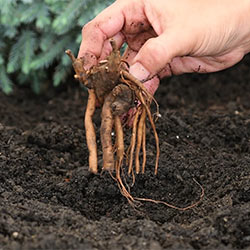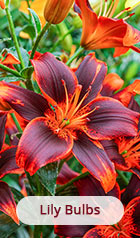
How to Plant, Grow, and Care for Mums
The hardy
varieties of chrysanthemums are as well-known a part of fall as are football games and apple picking. They're popular in autumnal displays, as well as in winter and fall weddings and late-summer patioscapes. While many gardeners grow mums as annuals, they can be kept in the ground and grown as perennials, too!
What are the most popular colors for mums?
Mums are well-loved for their shape, size, and attractive fall colors. The most popular mum color combinations are
red,
gold, orange,
purple and
white, but mums also grow in gorgeous corals, pinks, and taupes. These fiery plants fill in autumn gardens with rich, warm colors.
When Do Mums Bloom?
The blooming season for mums is late summer and early fall. Early bloomers in warm locations may begin blooming in late July, while some mums won't bloom until September. Climate also plays a role in bloom time.
When to Plant Mums:
Mums should be planted in the spring, and allowed to become established through the summer. Getting your mums in the ground early increases their chances for success as perennials. Don't wait until fall to pick up mums from a big-box store-plan ahead, and get them into the ground in springtime. Spring planting gives your perennial mums plenty of time to build a strong root system before the cold weather sets in!
Where to Plant Mums:
Space the plants 3 to 4 feet apart, and choose a location for your mums where water doesn't pool. Mums need plenty of sunlight to bloom well, and they also need well-draining soil. You can amend your soil with loam or compost if you're gardening with heavy or clay dirt.
Flowers on Mums grow in tight clumps, so consider using them as border flowers or in the corners of beds. These also make excellent container plants-you can move them, in fall, to the front of your home as autumn decoration, and place them in a less visible area when they're not in bloom.
How to Care for Mums in the Winter:
What do you do with mums after they bloom? Pinch your mums back after blooming, as deadheading can increase reblooming capability. Allow the foliage to stay on the plant, so that it can recover some energy for the next season.
During the winter season, even the hardiest mums need some extra care to be saved for the next year. As winter approaches, make sure the soil is moist and mulch the plants with straw or shredded hardwood. There's no need to remove dead plant material until the spring, so leave some stems on your mums for a little extra winter interest. These plants look simply stunning when covered in fresh-fallen snow.
Frequently asked questions:
Do mums come back year after year?
While many gardeners grow mums as annuals, to be lifted and discarded after the blooming season, mums are perennial in Zones 5 through 9, meaning that they can come back year after year. To make sure your mums grow well and perennialize, give them the best start possible. Plant them in early spring, so that they'll have time to settle into their new location and develop roots before the cold winter. Choose a location with plenty of sunlight-at least six to eight hours per day-and good drainage. Mums are relatively slow to bloom, so you'll see buds on the plants up to ten weeks before they bloom. These plants provide nice foliage through the summer before creating their burst of autumn color.
Do potted mums come back?
Potted mums generally do not overwinter as well as mums in the ground-their roots are less established, and they generally don't have that in-ground warmth that mums rely upon to survive the winter. However, there are two techniques to try to save your potted mums.
The first is simply to bury the pots, providing insulation for the roots and a chance for the plants to re-grow within their natural timeframe. This method works best in warmer climates, such as Zones 7 and above. Cut back the foliage to the edge of the pot, and plant the mum-pot and all-into the ground before providing a thick layer of mulch over the planting area.
You can also attempt to plant your mums in autumn-just know that success is not guaranteed. If your area has a very late frost, or doesn't frost at all, your mums may have time after blooming to become established before winter. Trim the foliage back, and plant your mums at the same depth to which they were planted in the pot.
How late is too late to plant mums?
Mums perform at their best when they're planted in early to late spring, and are given plenty of time to become established. However, if you've received a potted mum and don't want to toss it out after bloom time, you can certainly try to plant it-just know that the plant might not take. To give it its best chance for success, site your mum in a sunny location with good drainage. Cut back any rotten foliage, and plant at the depth in which the plant was potted.
Can you mix mum colors?
Some of the best displays of mums include a rainbow of beautiful fall colors! Mix and match your mums with multiple colors, textures and forms for an all-mum garden. Mums also pair beautifully with other late bloomers, such as asters and late-season daylilies. Be aware that, because mums primarily propagate from roots, two varieties of mums won't cross breed to create a new cultivar without expert breeding. But, the plants will grow closer together and fill in an area in an attractive way year after year.
When should mums be cut back?
Mums can be cut back in fall or in spring-there's no need to trim back your mums right after the flowering season, but you can cut the leaves back after the first frost. Just be sure to leave the foliage until that frost, so that the plant can collect as much energy as possible for the following year.
Have another question? Return to the Customer Service Help page or send an e-mail directly to Customer Service






















